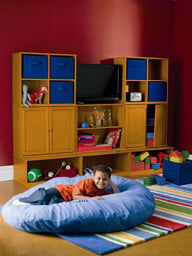Bifocal Wearers Make the Switch to Multifocal Contacts
Findle is one of roughly 90 million Americans -- and growing -- who have this condition. Known as presbyopia, the condition is so common it will affect nearly everyone after age 40.
Normally, the eye changes focus by using a muscle to change the shape of the lens. But as the eye ages, its lens loses the ability to change shape, causing close-up images to appear blurry.
Presbyopia usually starts after age 40 and continues to worsen into a person's 60s. But life doesn't exactly stop after 40 -- patients with presbyopia need to remain comfortable as they perform everyday activities.
In the past, bifocals were the best option. But bifocals can be unwieldy and uncomfortable to wear. Findle described having to hold his head at a certain angle to see his television or computer screen.
Luckily, Americans can now explore other presbyopia-correction options. For example, CooperVision makes several multifocal contact lens products to help patients see clearly at every distance.
Findle, after trying bifocals, decided to give multifocal contact lenses a try. "What's overwhelmed me is how comfortable multifocal contact lenses are," said Findle. "Contacts really give me the best option to see clearly, near and far. Glasses are so much more of a compromise."
Findle also likes the contacts' convenience -- they don't slip down his nose when he's working outside, he finds reading easier and he never worries about misplacing glasses -- unlike his wife, who owns 10 pair.
"With multifocal lenses, both seeing the computer screen and reading are clear and easy," said Findle. "My correction with multifocal contact lenses is 20/20."
For more information about using multifocal contact lenses to correct presbyopia, visit www.coopervision.com.






No comments: